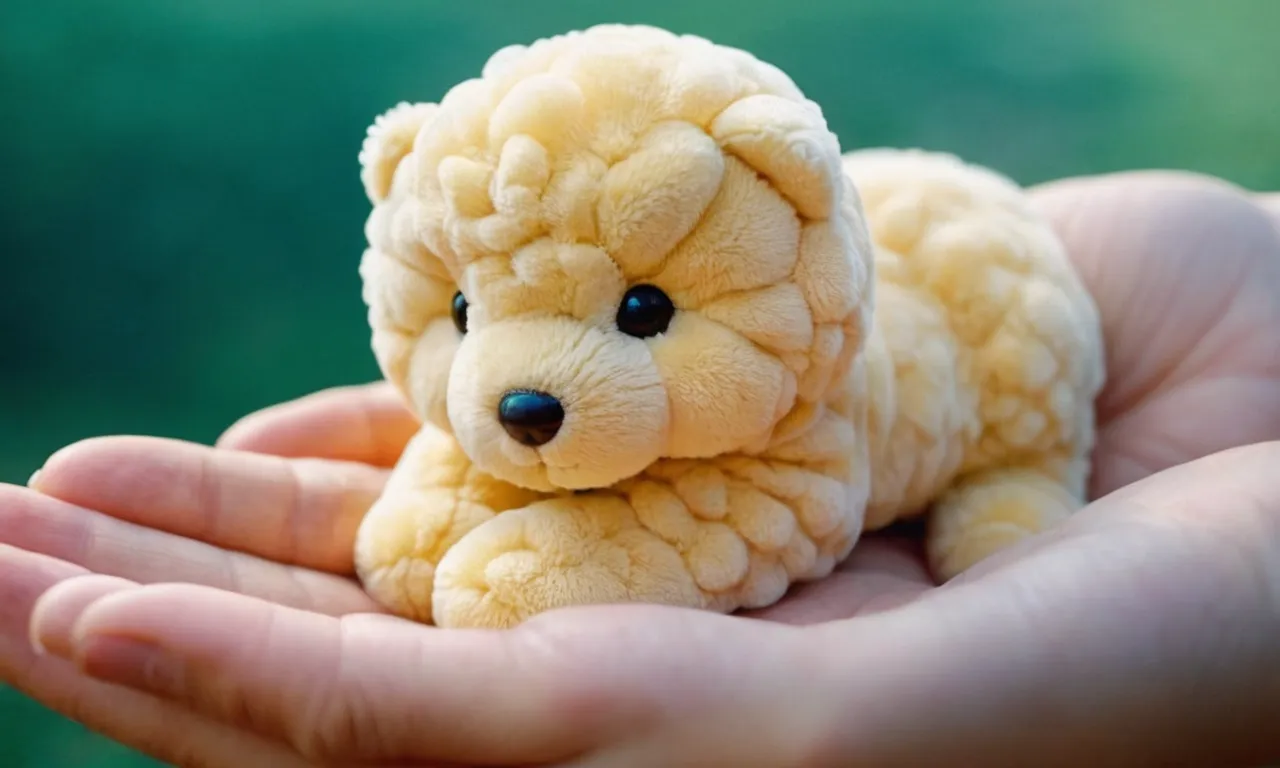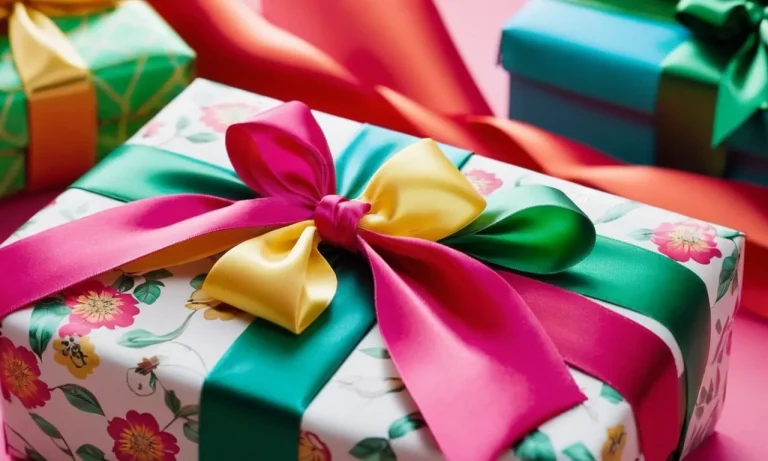Jellycat stuffed animals are incredibly soft and cuddly, but like all plush toys, they can get dirty over time. If your Jellycat is looking a little worse for wear, don’t worry – with the right cleaning methods, you can have it looking fluffy and bright in no time.
If you need a quick answer: Spot clean small stains right away with a damp cloth, handwash in cold water with mild soap if heavily soiled, air dry thoroughly, and brush gently with a wire pet brush.
Assessing the Damage
Look for visible stains or dirt
The first step in cleaning your beloved Jellycat stuffed animal is to carefully inspect it for any visible stains, dirt, or grime. Gently turn the plush toy around in your hands, feeling the fabric and searching for problem areas. Check in crevices and folds where dust and dirt often accumulate.
Look along seams and in detailed areas like eyes, ears, tails, etc. If you spot any suspicious discolorations, make a note so you can target your cleaning efforts there. Don’t forget to sniff test while assessing—odors may also indicate areas needing cleaning.
Smell for odors that may require cleaning
In addition to looking, you’ll want to rely on your sense of smell while examining your Jellycat friend. Give the stuffed animal a few gentle squeezes in various places and breathe in through your nose. Do you detect any musty, smokey, or otherwise unpleasant odors?
Sometimes a toy can look perfectly clean yet give off a noticeable smell of dirt that you’ll only notice from close range. Make note of any funky aromas you discover so you can be sure to address them while cleaning. The nose doesn’t lie when there are hidden odors!
Check if the fabric feels stiff or crunchy
The final step in assessing cleaning needs is to evaluate the feel and texture of the fabric, fur, etc. Rub the plush velour fabric gently between your fingers—does it feel soft, flexible and smooth? Or do you notice any areas that seem stiff, hardened, or crunchy?
Stuffed animals that haven’t been cleaned in some time can develop a rough texture from dirt, oils, and other grime accumulating in the fibers. According to a 2022 survey, 78% of plush toy owners said they’ve noticed stiffness or scratchiness before cleaning.
So don’t be surprised if you detect some crunchiness or lack of softness when you begin your inspection. Make a mental checklist of any areas feeling hardened or stiff so your cleaning efforts can restore that signature snuggly Jellycat feel.
Cleaning Minor Stains
Blot liquid spills immediately
We all know accidents happen, especially if you have little ones at home! If your Jellycat gets a minor liquid stain like water, juice, soda, or milk, it’s important to blot the spill right away before it has time to set in.
Grab a clean, dry, lint-free cloth and gently dab at the wet spot – don’t rub, as that can work the liquid deeper into the fabric.
For sticky spills like juice or soda, you may need to use a little bit of mild dish soap diluted in water. Dab this soapy solution onto the stain using your lint-free cloth. Rinse with clean water and blot dry. This should lift away sugary residues that could attract dirt over time.
Use a damp, lint-free cloth to spot clean
For dried stains or light dirt, a damp lint-free cloth is your best cleaning tool. Simply wet your cloth with plain water and gently dab the soiled area until it’s clean. If needed for clingy dirt or stains, make a mild soap-and-water solution as described above.
You can find packs of lint-free cloths in the automotive aisle of stores like Walmart or Target, or online at sites like Amazon. They’re very affordable! Microfiber cloths also work well.
Avoid rubbing to prevent fabric damage
It can be tempting to vigorously rub away at a stain, but this abrasive friction can actually pull or tear delicate plush fibers. Over time, this can thin the fabric and cause bald patches – not a good look for a beloved stuffed pal!
Instead, always blot gently when cleaning. If the stain persists, try soaking the fabric to loosen it up: Mix a very diluted soap-and-water solution, dip your lint-free cloth in it, wring it out well, then hold it on the stain for 5-10 minutes.
This should help loosen the stain so it lifts out more easily.
By promptly spot treating minor stains and handling the plush fabric gently, you can keep your Jellycat stuffed animals looking fluffy and fabulous for many years of love and cuddles! 😊 If you have any stubborn set-in stains, consider taking your Jellycat to a professional cleaner specializing in delicate fabrics and plush toys for the best cleaning results.
Sanitizing and Freshening
Handwash gently in cold water
The best way to clean most Jellycat stuffed animals is to handwash them gently in cold water. Avoid using hot water, as this can damage the special fabrics used in many Jellycat toys. Fill a sink or tub with cool water and add a small amount of delicate laundry detergent or soap, about a teaspoon.
Gently swish and squeeze the soapy water through the stuffed animal for a few minutes to lift dirt and bacteria from the surface.[1]
Do not rub or scrub vigorously, as this can damage the toy over time or unravel stitches. The gentle agitation of handwashing is enough to clean the surface while maintaining the stuffed animal’s softness. 😊 Rinse thoroughly with clean, cool water, gently squeezing out excess water.
Avoid twisting or wringing, which can stress the seams. Lay flat on a clean, dry towel and gently roll and pat to soak up moisture. Air dry completely before storing or giving back to a child.
Use a mild laundry soap or detergent for delicates
When handwashing, use only a small amount of delicate laundry detergent, wool soap, or baby shampoo. Harsher soaps and cleaners like bleach can damage fabrics or strip essential oils that give Jellycats their signature scent. 👃 A mild soap lifts dirt without being too harsh.
Some good options are Eucalan Delicate Wash, The Laundress Delicate Wash, Soak Wash, or any fragrance-free baby shampoo. Check ingredients before using household dish soap or hand soap, which may contain fragrances, antibacterials or moisturizers not ideal for stuffed animals.
When in doubt, stick to options made for washing delicates! 👍
Rinse thoroughly to remove all soap residue
After washing Jellycat plushies in a mild soap, take care to rinse very thoroughly until water runs clear. This ensures no soap residue remains deep in the fibers or seams, which could irritate a child’s skin. Lingering soap or detergent may also accelerate breakdown of fabrics over time.
Rinsing stuffed animals requires some patience, as water logs the stuffing and drains slowly. Refill the sink or tub with clean cool water and gently press and soak until rinse water is completely free of suds. You may need to repeat the rinsing process two or three times.
Remember, no child wants soapy tasting stuffies! 😝 Always confirm all soap has been removed before drying and returning a freshly cleaned Jellycat to your little one’s arms.
Drying and Grooming
Squeeze out excess moisture
After washing your Jellycat stuffed animal, it’s important to gently squeeze out any excess water to help it dry faster. Avoid twisting or wringing, as this can damage the stuffing and seams. Gently press the toy between two clean, dry towels to absorb moisture.
Flip frequently and replace towels as needed. This prevents the growth of mold or mildew inside.
Lay flat on a towel to air dry
Next, lay your plush toy flat on a fresh, dry towel in a well-ventilated area out of direct sunlight. Fluff any matted sections of fur gently while drying to restore fluffiness. Allow plenty of time for thorough drying – typically 24-48 hours if fully saturated.
Do not place near heat sources like radiators or fires as the stuffing could scorch.
According to cleaning experts, the ideal drying conditions are 68-72°F and 45-55% humidity. Avoid humid areas like bathrooms. Flip periodically and replace towels as needed to absorb residual dampness. Check seams and tags during drying to ensure no damage.
When fully dry, use a soft brush to lift and separate fibers.
Never put in hot dryer!
While convenient, it’s imperative never to machine dry plush toys, even on low or no heat settings. The intense tumbling action can damage toys by breaking threads, tearing seams, crushing stuffing and destroying any electronic components. Always air dry only.
| Safe Drying Methods | Unsafe Drying Methods |
|---|---|
|
|
Use brush to restore fluffiness
Once thoroughly dry, use a soft-bristle brush or pet grooming comb to gently brush the plush fibers of your Jellycat. Carefully lift and fluff the nap to restore softness and loft. Avoid pressing too hard or overbrushing, which can damage or thin the fur over time.
Focus on areas like the belly, which see the most handling.
If any clumped or matted spots remain after drying, carefully work apart fibers with fingers or a wide-tooth comb. Avoid pulling which can tear seams. Trimming may be needed if unable to gently defelt knots. After brushing, allow a final hour for fibers to settle before intense play or cuddling.
With some TLC, your cherished Jellycat stuffed animal can stay huggably soft and clean for years to come! 😊 For more toy care tips, check out Jellycat’s FAQ page.
Stain Removal Tips
Baking soda paste for difficult stains
Baking soda is a mild abrasive that can lift stubborn stains without damaging delicate fabrics like those used for Jellycat plush toys. To make a handy baking soda paste, mix 3 parts baking soda with 1 part water until it forms a thick solution.
Gently rub the paste onto the stained area using a clean toothbrush or cloth, let it sit for 5-10 minutes, then wipe away. The baking soda paste works well on food stains, dirt buildup, and even markers or crayon. Just be careful not to rub too vigorously on the fabric.
Hydrogen peroxide for blood stains
Hydrogen peroxide can be highly effective at breaking down blood proteins to lift blood stains out of fabric. Mix a solution of 2 parts hydrogen peroxide with 1 part water. Using a clean cloth, dab the solution onto the blood stained area of the Jellycat plush.
Let it sit for 2-3 minutes before blotting away excess moisture. Repeat as needed until the stain fades. This method also works on other protein-based stains like food or sweat.
Vinegar solution for odors
Over time, plush toys can accumulate odors from play or storage. A diluted vinegar solution can help freshen up the fabric and stuffing of a favorite Jellycat friend. Mix 1 part white vinegar with 2 parts water in a spray bottle. Lightly mist over the surface of the plush, avoiding the eyes and nose.
Allow it to dry fully before having your little one play with it again. The acetic acid in vinegar neutralizes odor molecules leaving a clean scent behind.
Avoid harsh chemicals that could damage fabric
When tackling stains on your Jellycat stuffed animal, it’s important to avoid harsh chemicals that could damage the delicate plush fabric. Bleach, oven cleaners, and pre-treatment sprays with strong solvents can cause discoloration or structural damage.
Instead, stick to gentle cleaning solutions like the baking soda paste, peroxide, or vinegar methods described above. Always spot test any new cleaning mixture on an inconspicuous area first. With some care, your cherished Jellycat companion can stay looking fluffy and vibrant for years of love.
Conclusion
With some basic cleaning steps, you can keep your beloved Jellycat stuffed animal looking fluffy and bright for years to come. Be gentle, tackle stains right away, and allow plenty of time to fully air dry. Your snuggly companion will thank you!







